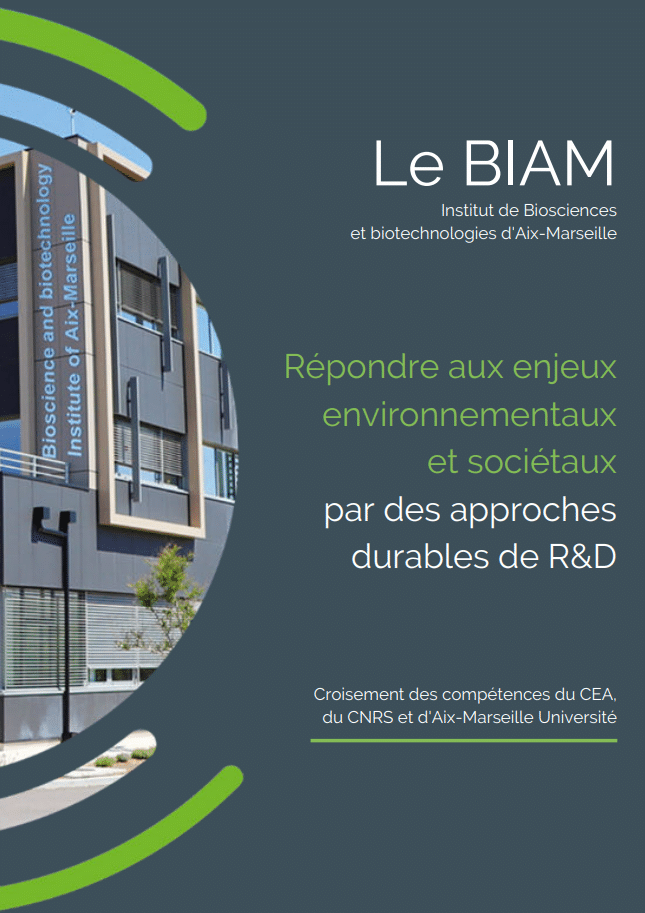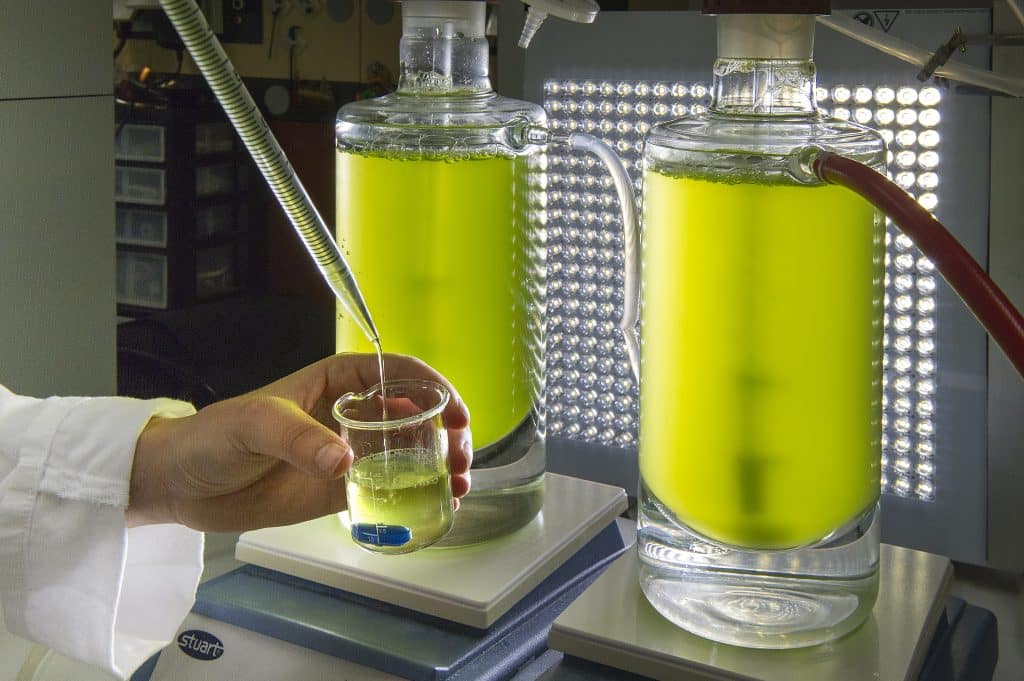i-PhD Grand Prix

Alcasun, the biosourced revolution: Exclusive interview with the winner Alcasun is a biotech start-up project targeting cosmetics, green chemistry and bioenergy markets. The founders of this future startup have succeeded in isolating an algal enzyme capable, in the presence of blue light, of converting fatty acids into hydrocarbons (or alkanes) for cosmetic use. Alcasun’s ambition […]
Teaching training

Le BIAM A Key Player in Environmental Biology Education Training in Life and Health Sciences Our institute supports PhD students and also hosts interns and work-study contracts within one of our 8 research teams. Plinius Cursus As a co-director of the IM2B, our institute participates in the Plinius Cursus program. This training is aimed at […]
CO2 sequestration by algae:
the energy source behind the process unveiled

An international collaboration between BIAM researchers and the Carnegie Institution for Science in Stanford (USA) has revealed how solar energy is supplied to metabolic reactions of algal cells to fuel atmospheric CO2 fixation. This discovery provides an understanding of the fundamental basis for efficient CO2 sequestration by microalgae. These images show where the mitochondria are […]
Unlocking Plant Resilience: Evolutionary Synergy in Stress Adaptation

A groundbreaking mechanism enabling plants to optimize their photosynthesis has been unveiled by a scientific collaboration led by the BIAM. Remarkably, this discovery involves molecules of bacterial origin, and opens promising avenues for developing agriculture that is more resilient to climate change. Chlorophyll fluorescence images of plants for analysis of photosynthetic activity Photosynthesis, fundamental to […]
Unveiling a Resistance Mechanism in Staphylococcus Aureus

Staphylococcus aureus, a leading cause of fatal bacterial infections worldwide, has been extensively studied. Research conducted by INRAE in collaboration with the BIAM has revealed a key protection mechanism of this bacterium against a toxic molecule found in mammalian blood. This breakthrough paves the way for developing new antibiotic strategies. Bacterial infections are the second […]
RESTORE Project

The RESTORE Project, is inspired by solutions selected by nature To restore biodiversity to forest soils and improve the survival of replanted young trees The RESTORE (natuRe-basEd SoluTions for imprOving REforestation) project aims to study the interactions between plants, soil and microorganisms (microbiomes*) in forest ecosystems facing increased drought stress due to climate change. Our […]
Mystery unveiled for an exploration into the mysteries of cell growth

Plants resistant to a key inhibitor, with a strong influence on the process of cell growth, have been discovered by a team from BIAM. This is an asset for a better understanding of plant growth regulation, with potential implications in both the food security sector and the treatment of inflammatory diseases and cancers. The study […]
A sustainable synthesis of magnetite nanoparticles
for environmentally-friendly biotechnological applications

Researchers at BIAM drew inspiration from the natural processes encountered in magnetotactic bacteria to synthesize magnetite nanoparticles. This promising biomimetic approach opens up various avenues of sustainable and eco-friendly applications, ranging from water purification to biomedical advancements. Magnetotactic bacteria, naturally proficient in biomineralization, produce magnetosomes (magnetite nanoparticles) using a mineral precursor stabilized by macromolecules. This […]
Challenge Elan Eco Energies 2023 awards ceremony at the CEA

Two innovative projects from BIAM rewarded and supported by CEA On January 23rd, the CEA’s General Management organized the award ceremony for the Elan Eco Energies Challenge 2023. The event took place in the presence of Laurence Piketty, Deputy General Administrator of CEA, Marie-Astrid Ravon-Berenguer, Financial and Programs Director, and Armelle Mesnard, Director of Sustainable […]
Development of a technique for visualizing phosphate
distribution directly at the heart of plant tissues

A colorimetric method for the visual detection of intracellular phosphate distribution in plants has been developed by a Franco-Chinese collaboration involving a BIAM team. This method, called IOSA, highlights the uneven distribution of inorganic phosphate in cell tissues, opening up attractive prospects for the plant physiology sector. Overview of cellular distribution of Pi in leaves […]